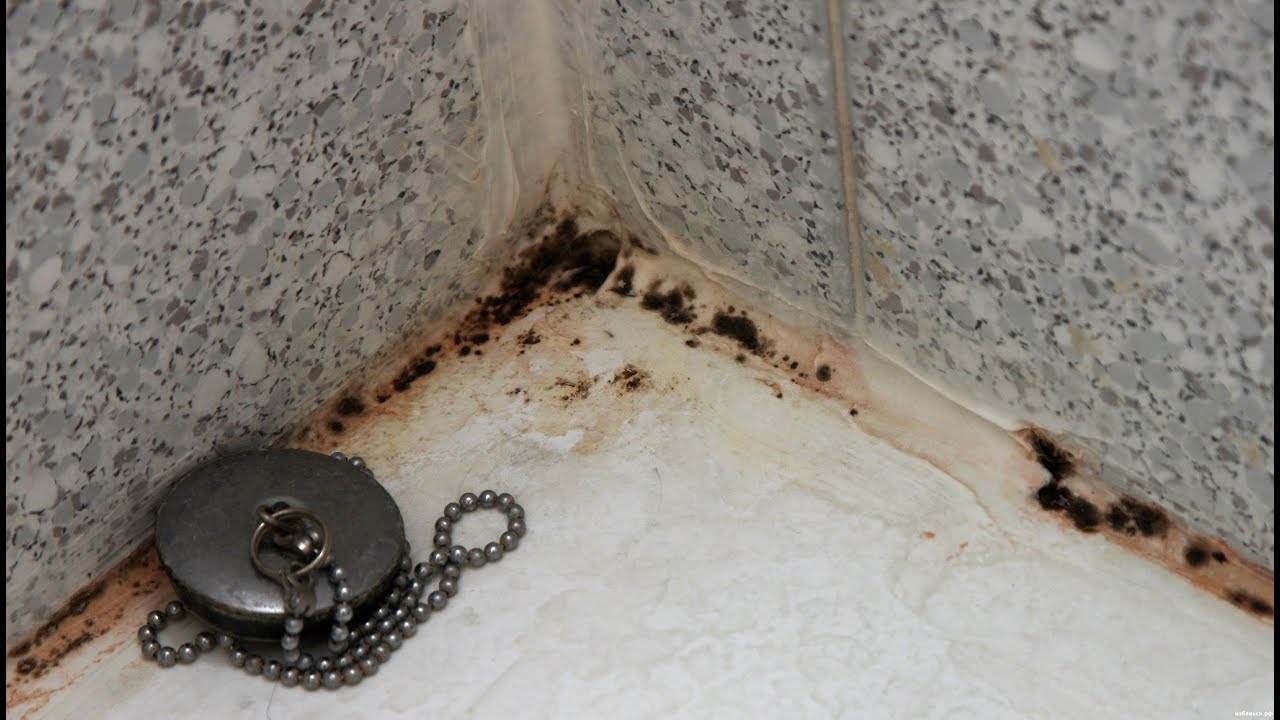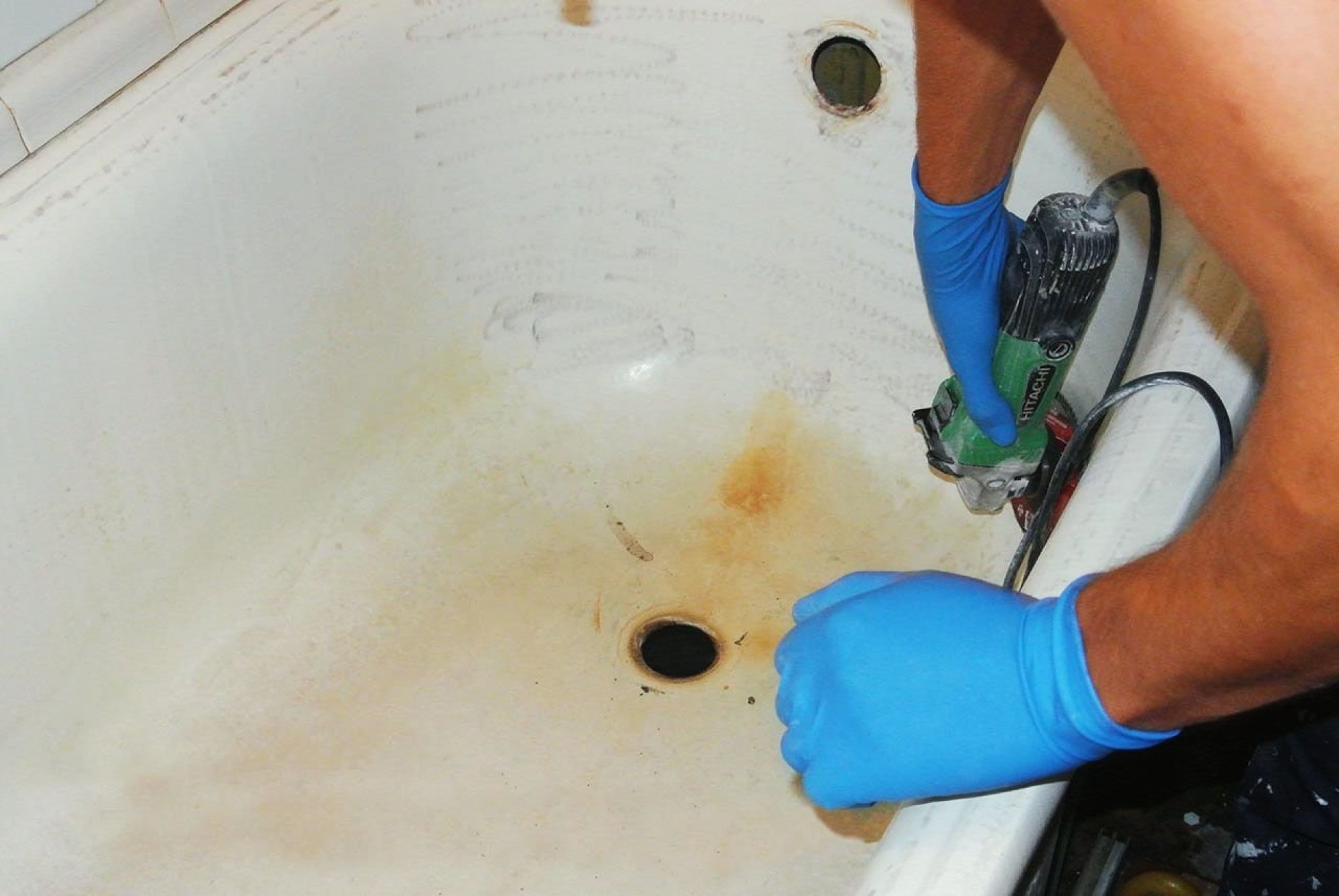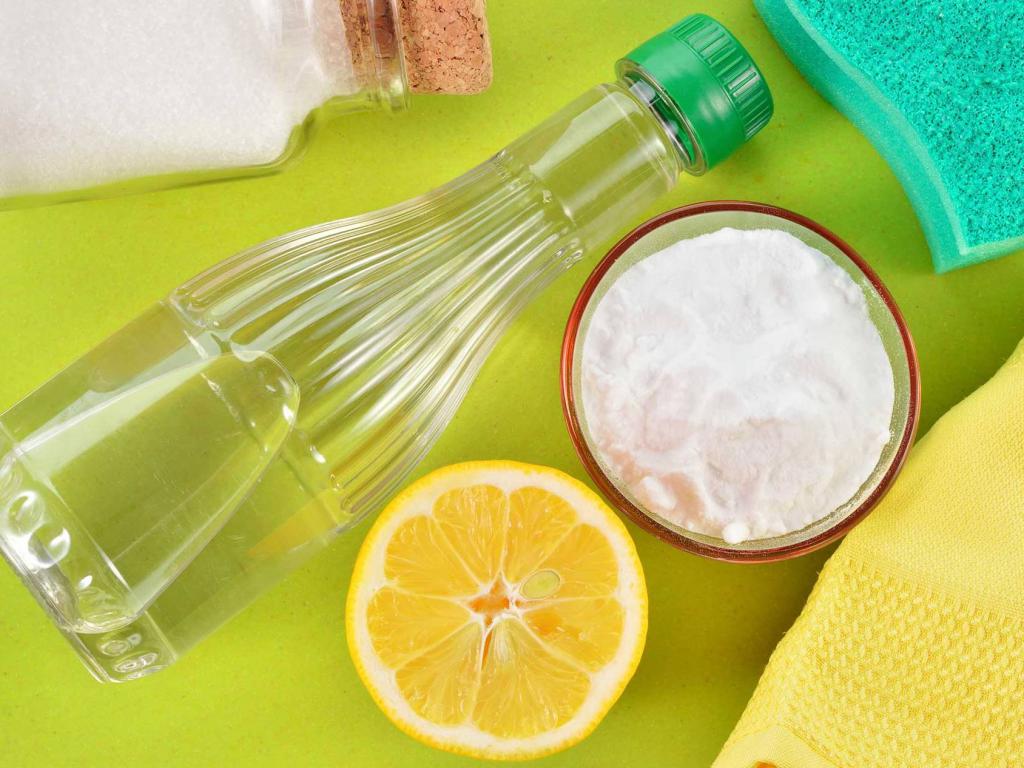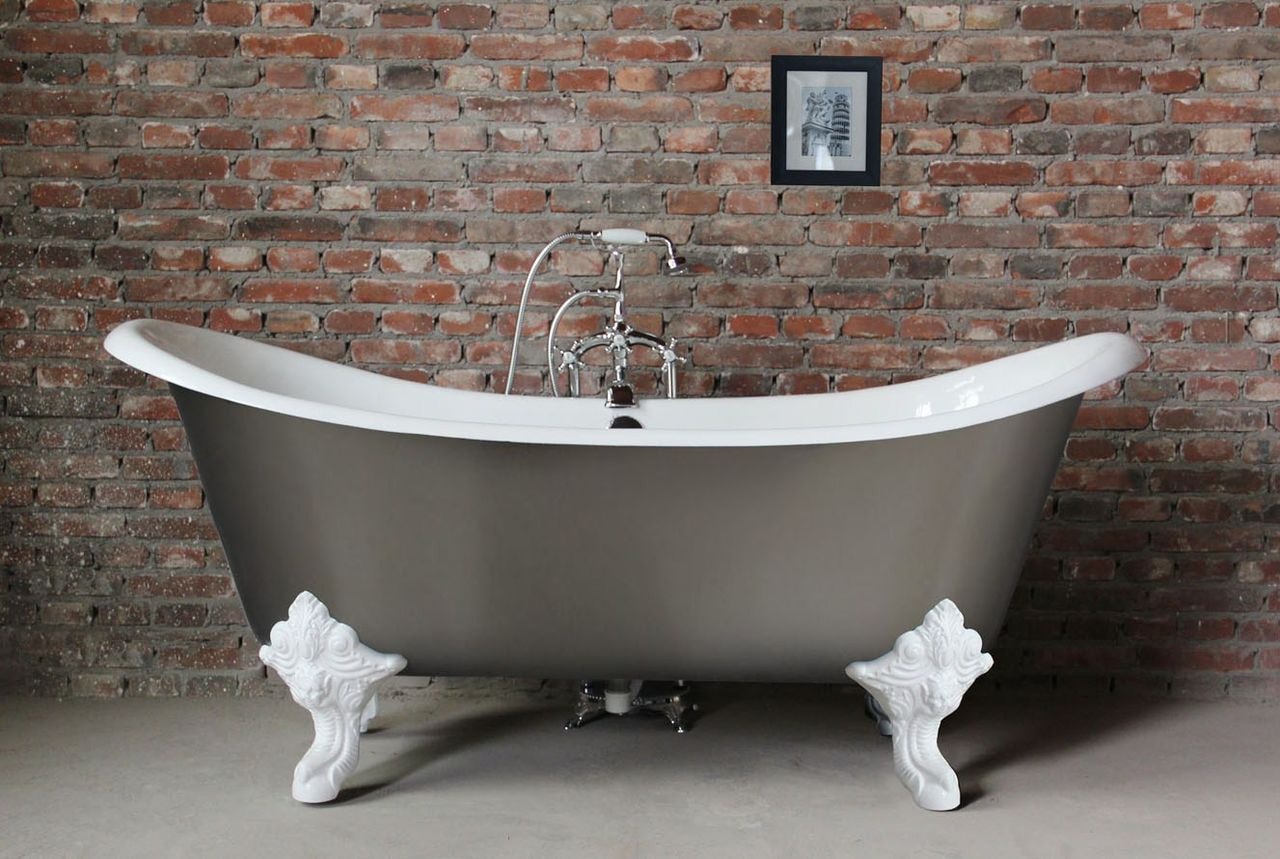How to whiten a bath at home
Modern bathtubs for the entire period of their operation are exposed to a very aggressive effect of a wide variety of media - from low-quality water to cosmetics. Over time, a heavily soiled bath can become extremely unsightly.

However, do not despair, it is quite possible to whiten the bath with your own hands at home. How to get the maximum result from this procedure, we will tell you below.
- Why is the bathroom dirty?
- Types of bath contamination
- Special cleaning products
- Effective folk remedies for cleaning
- Cleaning the acrylic bathtub
- Cast iron bath whitening
- How to clean a tub with heavy dirt
- How to avoid mistakes
- How often do you need to wash the bath
- How to care for your bathroom
- Video: how to whiten a bath at home
Why is the bathroom dirty?
Regardless of the type and composition of the snow-white base, the reasons for the contamination of the paint and varnish surface can be both natural hair products and chemicals for body care, of which there are a very large number in modern cosmetics. Often, ordinary tap water with salts and chlorine contained in it also acts as a pollutant.

To cope with each of them, you need to have at hand the most common housewife's tools - washing sponges and working solutions. Most often, the necessary tool can be found at hand, and there are professional materials sold in specialized stores.

Before you clean up the dirt, it is useful to have an idea of what they are in principle.
Types of bath contamination
All visible pollution is usually divided according to the nature of the reasons that caused their appearance.
Hard water. The high concentration of salts in the water used for bathing has the most negative effect on the acrylic or enamel of the bath. After them, the surface ceases to be glossy and gradually turns into a loose and unsightly layer. The pores formed on the surface actually begin to retain dirt on the surface, the remnants of chemicals used when taking baths.
Note! Too hard water turns out to be harmful not only for the coating of the bathroom, but also for human skin.

High chlorine content in water. Modern wastewater treatment plants continue to use chlorine as their primary means of fighting harmful bacteria and microorganisms. Without completely dissolving in water, such compounds are retained on the snow-white surface of the bath, destroying it. Elements made of liquid acrylic and plastic are especially affected by such impurities.

Rust or yellowness. Many urban communications in modern cities are still in a depressing state, and rust appears from time to time as one of the factors polluting the bathroom. It is especially dangerous if the destructive effect of other substances has already been exerted on the enamel, then the rust actually eats into the paint layer, forming ugly smudges of an orange hue.

Also, if the base of the bath is made of steel or cast iron, water can penetrate through microcracks in the enamel layer, contacting the metal and causing oxidative reactions. They will also result in unsightly rust stains.

Plaque of soapy products. It is recommended to rinse off any remaining dirt from the surface of the bath after each use. Otherwise, over time, plaque will begin to form on the acrylic or enamel of the bath. And because of its alkaline composition, soap will only speed up this process.

The use of dyes in household chemicals. Such dyes are certainly present in all hair products, shower gels, shampoos and even liquid soaps. Accumulating over time, they make the snow-white surface look obscene.
Note! Many folk remedies have the greatest coloring effect on the surface of the bath - decoctions of oak bark, onion husks, turmeric, walnuts and saffron.
Special cleaning products
Special formulations of cleaning agents are specially designed to achieve the best effect and guarantee at least a result not worse than traditional ones. However, their improper use can do more harm, because all such solutions use an aggressive chemical base, which may well cause negative consequences.

Therefore, before using any professional product, you must carefully study its instructions and strictly follow them.
The most famous and effective remedies, which can also be purchased at almost any department store, are:
- Akrylan.
- Frosch.
- Unicum.
- Cif.

The above products are available in the form of gels and foams for cleaning the bath, but for stubborn dirt, it is recommended to use formulations such as Cilit Bang or Pemolux. Remember that they are not suitable for preventive care due to their high chemical activity in the case of Cilit,

Pemolux, on the other hand, is a powder that is not recommended for small contaminants due to the risk of damaging the glossy surface of the bath.
Effective folk remedies for cleaning
In addition to a wide selection of professional products, there are a number of folk recipes that recommend the use of ubiquitous table ingredients such as vinegar, soda or citric acid as the main materials for cleaning the bath.

We will talk about these and some other equally effective means below.
Vinegar
Plain table vinegar is an excellent tool not only for cleaning, but also for disinfecting the surface of the bathtub. Moreover, to obtain an acceptable effect, a 9% solution is quite enough, it is not at all necessary to take a concentrated essence.

With its help, you can remove from the surface not only salt or limescale, but also disinfect from fungus and other harmful microorganisms.
When using this tool, the following methods are used.
- Vinegar bath. Add a liter of vinegar to a whole bath of warm water and leave the resulting solution for 6-12 hours.
- Vinegar lotions. As the name implies, pour a little 9% solution onto a small piece of gauze, cotton wool or paper and leave it for 6-8 hours.In this way, it is possible to remove both rust and strong alkaline deposits.
- A mixture of baking soda and vinegar with bleach. Due to the high toxicity, we recommend cleaning with this solution with protective gloves, goggles and a mask. And the method is suitable because of its high aggressiveness for old stains that could not be removed with more gentle recipes. First, the bath is preliminarily washed out with running water and treated with a mixture of salt, water and soda. After 10 minutes, pour a mixture of table vinegar and bleach in equal parts over the powder layer. After another 30 minutes, add a little soda to enhance the reaction and wash off the remnants of the product from the surface with a household sponge. After another 5-7 minutes, the process can be considered complete, the bath can be used only after thoroughly rinsing the surface with water.
Note! For this method, it is recommended to cover the surface of the bath with a layer of film to prevent the toxic vinegar from evaporating into the room.

Soda
By itself, baking soda is perfect for a mild cleaning powder, which means it can be used to clean bath enamel with minor contamination.

The best effect can be achieved if you use it in a mixture with soap or acids, for example, the same vinegar. However, it is important to observe the time (on average no more than 30 minutes) for maintaining such a composition on the surface of the paint.
Lemon acid
Citric acid, which can be found in the juice of fresh lemons or in powder dissolved in water, can remove the following types of contaminants:
- lime;
- rust;
- yellowing of the enamel.

Lemon juice is used in a 1: 1 ratio with water, it is better to give such a liquid time to start effective action - usually 10 minutes is enough. If it is decided to use citric acid in powder, 2 tablespoons of the substance are added to a glass of water and used mainly with preliminary soaking.

Oxalic acid
This tool, although it belongs to the category of folk, is often used in professional cleaning. Acid should be used with extreme caution - a concentration higher than the recommended 5% can give a much more negative result than benefit.

We leave the acid on the surface of the contamination for 1-2 hours, and then remove it with liquid soap.
Cleaning the acrylic bathtub
When cleaning this type of bath, it is strictly forbidden to use substances that can dissolve plastic. Therefore, we carefully read the instructions for the professional tool, and also do not deviate from the recommendations for folk remedies.

It is best to clean the acrylic bath with a weakly acidic solution - vinegar, oxalic acid, avoiding their prolonged exposure to the surface. The use of powders is prohibited, they can cause great damage to the surface.

Before bleaching an acrylic bathtub at home, it is recommended to pre-test the selected product in an inconspicuous place in the bathtub, for example, a side bend. And if such a test does not show any negative results, the work can be continued.
Cast iron bath whitening
Cast iron is covered with an enamel layer, which requires cleaning over time. Here you can use almost any tool, because the enamels for such baths are quite durable. The question of how to whiten a cast iron bathtub at home is not as difficult as it seems.

A combination of several means is best suited - soda with vinegar, oxalic acid, special means for enameled surfaces, voiced earlier.
How to clean a tub with heavy dirt
If the cleaning work is planned to be carried out in a heavily soiled bathtub, it should be divided into several separate stages. The first step is to remove traces of rust, after which you can proceed to the treatment of alkaline deposits.

Everyone can decide for themselves how to whiten a bath, it is enough just to carefully re-read the above review of the most effective remedies.
How to avoid mistakes
Most often, errors occur due to non-observance of the holding time of cleaning agents and solutions on the surface. Therefore, for professional fluids, we carefully read the instructions for their use, and for equally effective folk remedies, we use the recommendations of this material.

It is also worth remembering that enamel and acrylic are materials of different properties, and should be cleaned in accordance with the recommendations.
How often do you need to wash the bath
In modern water supply conditions, it is recommended to rinse it clean every time after taking a bath, and at least twice a month to wash it with a cleaning powder. Of course, if the bath is used more intensively, the prevention should also be done more often.

But for a family of three, one brush every two weeks will ensure the bathtub is coated for a long period of (in every sense) brilliant service.
How to care for your bathroom
The main methods of care include already sounded rinsing after each intake of water procedures, as well as maintaining its surface in its original form. And even if contamination appears, you can deal with it in just a few steps, thanks to the information from this article.

Maintaining the bathtub in its original form is not as difficult as it seems, and if you suddenly need to whiten its surface, the recommendations of this material will come in handy.
Video: how to whiten a bath at home





